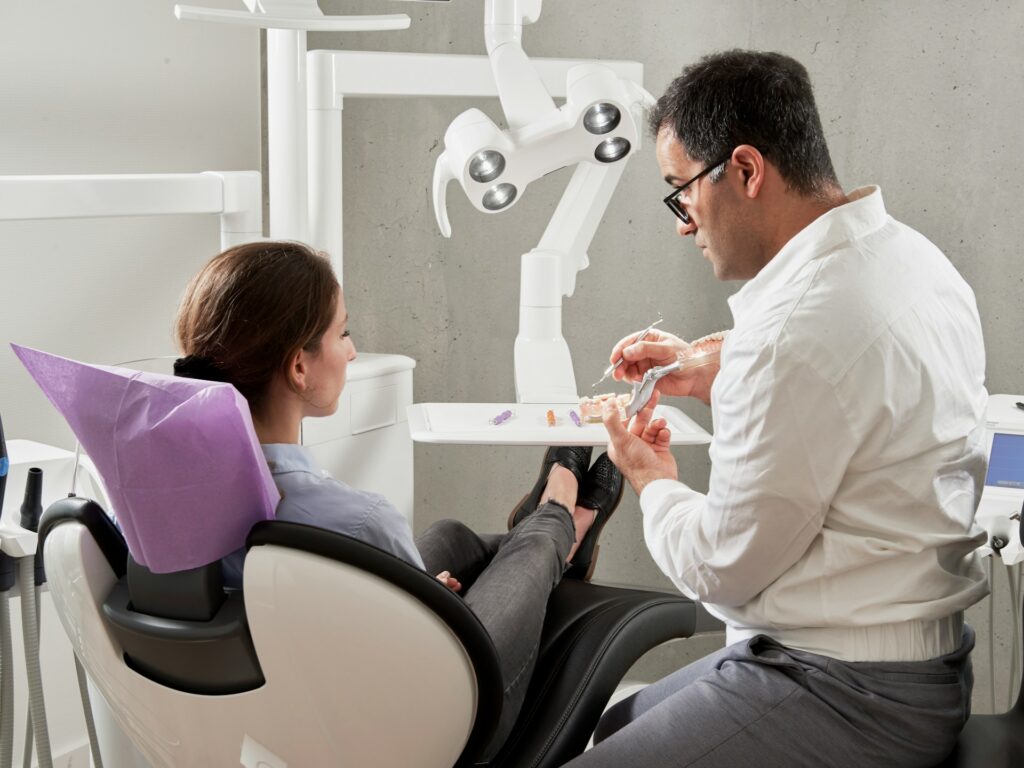Dental implants are the most natural-looking, longest-lasting solution for replacing missing teeth. However, the success of dental implants relies on precise placement. While a highly skilled oral surgeon can perform a non-guided, or “freehand” surgery, it has many drawbacks. Surgical guides, on the other hand, offer more predictable outcomes. We further compare freehand vs. surgical guide implant placement below.
Freehand Dental Implant Surgery: Pros and Cons
During freehand implant placement, the surgeon relies on clinical judgment and their own experience to manually position the implant. No guiding tools or templates are used. This method requires a high level of skill and expertise, and has a higher risk of failure compared to guided placement.
Pros:
- Freehand dental implant surgery still has a very high success rate. It can be a good solution for simple cases like a single implant.
- It may also be more cost-effective than guided surgery.
Cons:
- There is a higher risk of complications and dental implant failure with freehand surgery. For instance, the implants may not be placed in the optimal position, or a nerve could get damaged during placement. Often the complications are not realized until the crown phase of the treatment, where minor imperfections can be magnified into problems with the final restoration.
- The more implants you need, the greater the risk. If you have several missing teeth or need to replace a full arch with an all-on-4 implant-supported appliance, guided implant surgery is a safer choice.
How Guided Dental Implant Surgery Compares
Guided implant placement utilizes advanced technology to create custom surgical guides for optimal results. 3D imaging and computer-aided design and manufacturing (CAD/CAM) software ensure the surgical guide precisely dictates the position, angle, and depth of the implant placement before surgery. Guided dental implant surgery offers superior accuracy and predictability compared to non-guided “freehand” surgery.
Three Benefits of Surgical Guide Placement:
- Enhanced Precision
Guided surgery reduces the margin of error—especially for complex cases—and improves patient outcomes.
- Improved Safety
By pre-planning the surgery digitally, guided implant placement minimizes the risk of damage to adjacent structures (such as nerves or sinuses).
- Shorter Procedure
With a detailed surgical plan, guided implant surgery results in shorter procedure times and a faster, more comfortable recovery.
Freehand vs. Surgical Guides: Which Method Works Better?
Ultimately, the effectiveness of either method depends on the surgeon’s expertise and the complexity of the patient’s case. While both procedures typically yield successful outcomes, guided surgery offers unparalleled precision and more safety, especially in complex cases requiring multiple implants.
For example, a study from 2018 compared patients who underwent freehand placement to those who had surgical guide placement. Although all patients were happy with their results, after five years, there were two implant failures that resulted from freehand surgery. There were no failures in the guided surgery patients.
Transform Your Smile with Guided Implant Surgery
If you are interested in replacing your missing teeth with dental implants, please don’t hesitate to reach out to Copper Creek Dental. Located in Daybreak, Utah, we use surgical guide implant placement to ensure beautiful results that last. Our advanced in-house technology creates surgical guides that are customized for each patient.
Give us a call at 801-280-1911 to schedule a dental implant consultation today.
Images used under creative commons license – commercial use (5/7/2024). Photo by Caroline LM on Unsplash

